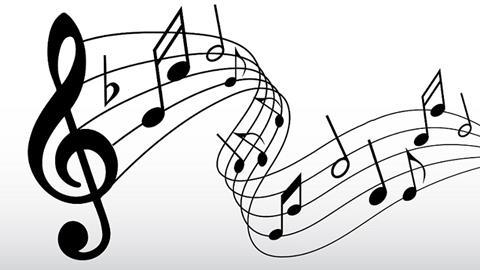By violinist and professor Eugene Gratovich

On a string instrument, sight-reading depends on the relationship between visual, mental, aural, and physical skills. A performer's limited solo repertory may not provide a person with adequate fingerboard knowledge and general musicianship. In addition, eye movements are seldom trained to quickly recognise and organise instrumental skills with musical notation. When I observe students during a sight-reading session, the most notable problem is their fixed glance on the sheet music. Therefore I have included exercises strictly for developing fluid eye movements.
1. Scan the page to observe as many difficulties as possible
One approach is to glance from the upper left to the lower right of the page diagonally through the middle of the page. For a useful exercise, tap a pulse at the speed of crotchet = 60 and name the first and last note on each line with each beat. Next step is to look across the same line on beats one and two and name the highest note on that line on beat three. Repeat this procedure for each line. Identifying the highest note on each line will help one choose appropriate fingerings. It is also helpful to locate any complex rhythms on the line which can then be carefully analysed during rests or long notes.
2. Identify sequences and intervals
In fast movements, recognise the sequences and intervals visually before you play them and follow the contour of the note heads. Read ahead by looking towards the first note of each group and memorise at least one beat of fast notes. Don't stop; whatever happens, keep going. This visual skill can be practised without the instrument. Hold a small sheet of paper in your hand and cover a group of notes after looking at them. Solfege this group of notes without looking.
3. Know all key signatures and be familiar with all diatonic scales
It is helpful to practise scales with different fingerings and to practise one scale in all keys. Also be able to play a chromatic scale starting on any note and with any finger.
4. Be familiar with common metres and rhythms
Triple metres of 6/8, 9/8 and 12/8 along with asymmetrical metres are particularly challenging to read in quick tempo. Keeping the pulse during syncopations and rests is important.
5. Choose a tempo in which you can play the most difficult passage
If the passage uses separate bows, play with a lighter bow stroke and stay near the middle of the bow for cleaner string crossings. In slurred passages, try to recognise the bow division and bow speed ahead of time.
6.Be familiar with the first six positions across the four strings
It is also helpful to know higher positions on E and A strings. One can learn these positions by playing two octave arpeggios in all chord forms within one position. A helpful exercise is to play these arpeggios starting with the third or fourth finger and ending on the tonic with either an extension or shifting finger. One-octave triads can also be played on one string with the use of extensions. This fingering helps to avoid unnecessary string crossings.
7. Be able to recognise extreme high notes and to find them on your instrument
It takes experience to play high pitches accurately. In reading the notation, it might help to start looking directly at the third ledger line and recognising the interval to the notated pitch. Likewise, to play the high note, aim for the nearest harmonic and finger the high note as an interval from this harmonic.
8. Recognise and be familiar with all the intervals, both visually and aurally
Intervals of perfect fourth, tritones, and sevenths, both major and minor, are particularly important in sight-reading. Be on the look-out for intervals which can be notated with enharmonic notes that make the original interval look different. A helpful exercise is to play all the intervals from one tonic, both above and below the note. Change the tonic daily.
9. Be familiar with common bowing patterns
Develop a repertory of the most common bowing patterns and practise them regularly both on and off the string.
10. Listen to the other parts of the ensemble
Recognise the general musical style and character. At the same time, focus visually on your own individual part. Listen to the underlying rhythm of the composition and understand how your part fits in the ensemble. It helps to visualise mentally the score from the parts that you hear. Do much music listening. General musical knowledge will help sight-reading.
This article was originally published in The Strad's February 1992 issue.
Best of 2022: The Strad Playing Hub
- 1
- 2
- 3
 Currently reading
Currently reading10 tips to improve your sight-reading
- 4
- 5
- 6
- 7
- 8
- 9
- 10
- 11





















































No comments yet